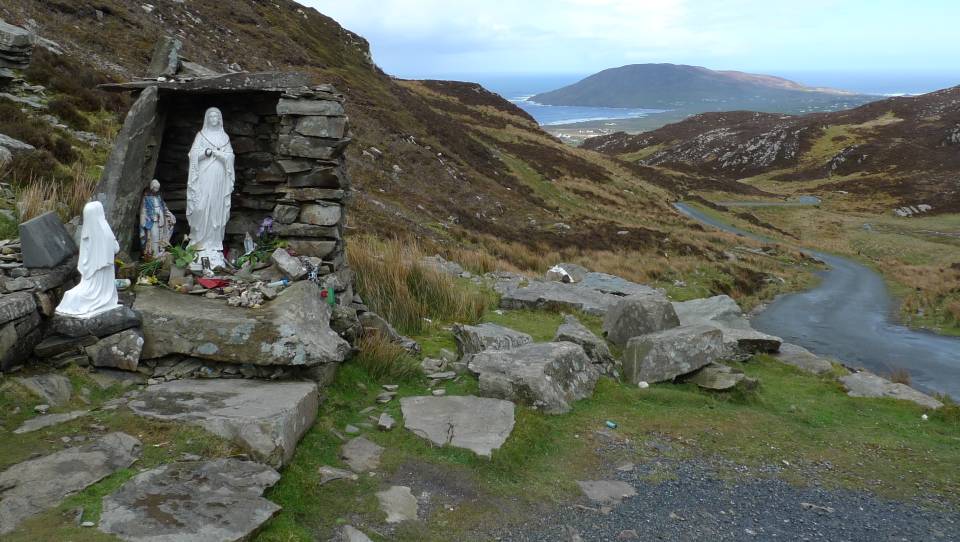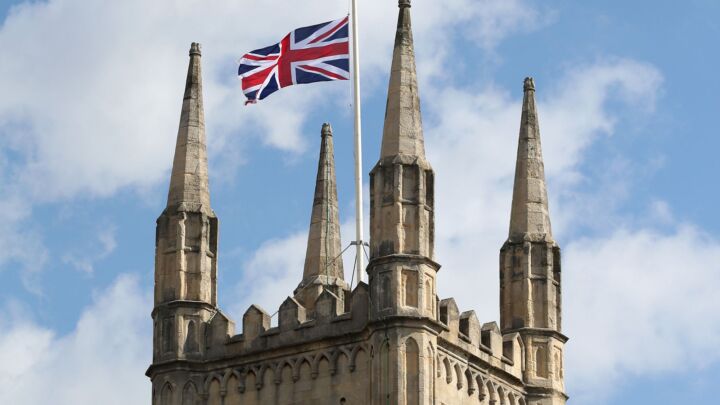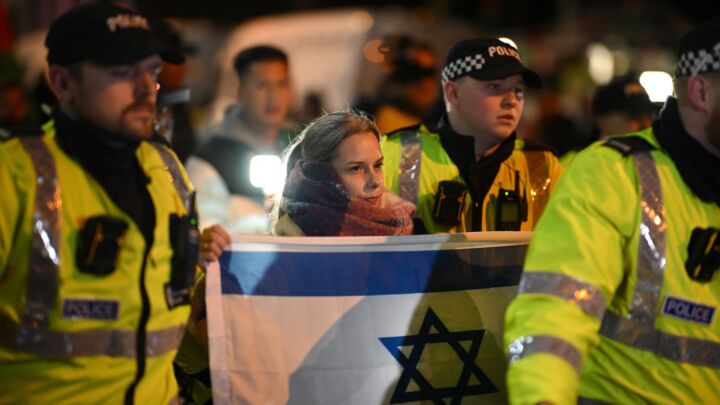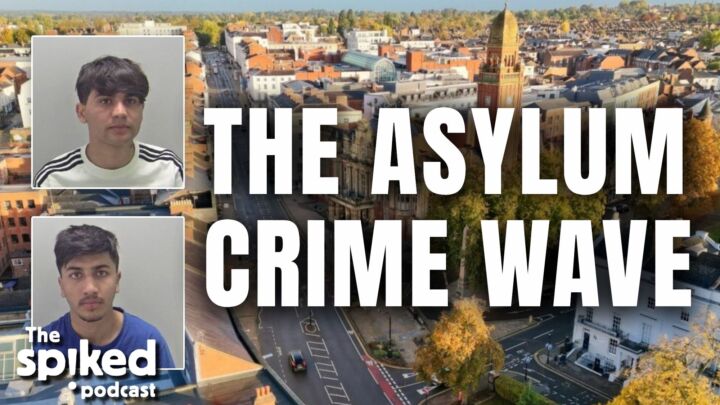The Tuam tank: another myth about evil Ireland
The obsession with Ireland’s dark past has officially become unhinged.

Want unlimited, ad-free access? Become a spiked supporter.
For proof of the maxim that ‘A lie will go round the world while truth is pulling its boots on’, look no further than the Tuam 800 dead babies story. Courtesy of a modern media that seems more interested in titillating readers with gorno than giving us cool facts, and thanks to a Twittermob constantly on the hunt for things it might feel ostentatiously outraged by, the story about babies being dumped in an old, out-of-use septic tank by nuns at a home for ‘fallen women’ in Tuam in Galway made waves in every corner of the globe. Then, a few days later, having finally strapped its boots on, the truth – or at least a more sober analysis of what might have really happened in Tuam – staggered on to the stage. And it was a very different story to the fact-lite, fury-heavy tale that had already gone round the world.
The speed with which the work of one local researcher in Tuam became a global story was amazing. Catherine Corless has been looking into the Mother and Baby Home run by nuns in Tuam for years. The home, which was active between 1925 and 1961, took in single women who were pregnant, which was considered a terribly sinful state to be in in early to mid-twentieth century Ireland. Corless discovered two things during her research: first, that between 1925 and 1961, the deaths of 796 children were registered by the nuns who ran the Tuam home; and secondly that in 1975 two boys in Tuam discovered an old septic tank on the grounds of the then-closed home, smashed through the concrete covering and saw skeletal remains inside. A fairly vague posting about these findings was put on to a Facebook page, and then all hell broke loose.
The media got a whiff of Corless’s findings and turned them into the stuff of nightmares. ‘Bodies of 800 babies, long-dead, found in septic tank at former Irish home for unwed mothers’, declared the Washington Post. ‘800 skeletons of babies found inside tank at former Irish home for unwed mothers’, said the New York Daily News. ‘Galway historian finds 800 babies in septic tank grave’, said the Boston Globe. ‘The bodies of 800 babies were found in the septic tank of a former home for unwed mothers in Ireland’, cried Buzzfeed. Commentators angrily demanded answers from the Catholic Church. ‘Tell us the truth about the children dumped in Galway’s mass graves’, said a writer for the Guardian, telling no-doubt outraged readers that ‘the bodies of 796 children… have been found in a disused sewage tank in Tuam, County Galway’. The blogosphere and Twitter hordes went even further than the mainstream media, with whispers about the 800 babies having been murdered by the nuns and demands for the UN to investigate ‘crimes against humanity’ in Tuam.
On almost every level, the news reports in respectable media outlets around the world were plain wrong. Most importantly, the constantly repeated line about the bodies of 800 babies having been found was pure mythmaking. The bodies of 800 babies had not been found, in the septic tank or anywhere else. Rather, Corless had speculated in her research that the 796 children who died at the home had been buried in unmarked plots (common practice for illegitimate children in Ireland in the early to mid-twentieth century) and that some might have been put in the tank in which two boys in 1975 saw human remains. The septic tank or the grounds of the former home have not been excavated. No babies have been ‘found in a septic tank’, as the Washington Post, Guardian and others claimed. The claim that the babies were ‘dumped’ into some kind of sewage system is wrong, too. Corless says the nuns ‘made a crypt out of the old septic tank’. She now says her research has been ‘widely misrepresented‘ and that she ‘never used the word “dumped”‘ to describe the possible placing of some dead children into a makeshift crypt (‘possible’ being the operative word).
More to the point, it’s actually not possible that all 800 dead babies are in this tank-cum-crypt, as pretty much every media outlet has claimed. Mainly because, as the Irish Times reports, the septic tank was still in use up to 1937, 12 years after the home opened, during which time 204 of the 796 deaths occurred – and ‘it seems impossible’, the paper says, ‘that more than 200 bodies could have been put in a working sewage tank’. Also, the Irish Times spoke to one of the men who in 1975, when he was 10 years old, disturbed the former septic tank and saw skeletal remains, and he says now that ‘there was no way there were 800 skeletons down that hole. Nothing like that number.’ He says there were ‘about 20’. Maybe his memory is fuzzy, but so far he is the only eyewitness we know of to this alleged pit of 800 dead babies in a tank in Tuam.
So the widely made claim that the bodies of 800 babies had been found in Tuam is not true; no excavation has taken place. The claim that the babies were ‘dumped’ in a tank is not true, according to Corless herself. And the notion that the babies were hurled in with sewage is not correct – apparently the tank had been turned into a crypt. Yet none of these recent revelations, or Corless’s public angst at the widespread warping of her findings, has put a stop to the Heart of Darkness-style coverage of Tuam’s evil, mysterious tank. Martin Sixsmith, former New Labourite hack turned author of The Lost Child of Philomena Lee, the story of a former inhabitant of a severe nun-run home in Ireland who was forced to give up her child for adoption, says the Tuam story reminds him of the ‘mass graves in far-flung locations in Eastern Europe and Russia’ that he once wrote about. In Tuam, ‘an ugly place’, we can see that ‘Western Europe [is not] immune from such horrors’, he says. A hysterical piece in the Irish Independent compared the Tuam home to the Nazi Holocaust, Rwanda and Srebrenica, saying that in all these settings people were killed ‘because they were scum’. You can almost hear the sound of the whip as yet another self-loathing member of the Irish chattering class makes an artform of public self-flagellation.
So in the space of a few days, without the benefit of any excavation or digging, we went from speculative claims made by a modest local researcher about the whereabouts of 796 children to heated talk across the world media about an Irish holocaust on a par with what the Nazis did to Jewish children. What madness is this? How did speculation that some children out of 796 might have been buried in a former septic tank become news headlines about 800 dead children having been found in a septic tank, leading to comparisons being made between Ireland’s old nuns and the architects of the Nazi Holocaust? Clearly this isn’t about news anymore; it isn’t a desire for facts or truth that elevated the crazed claims about Tuam up the agenda; rather, a mishmash of anti-Catholic prejudice, Irish self-hatred and the modern thirst for horror stories involving children turned Tuam into one of the worst reported stories of 2014 so far.
There is no doubt that life was grim in that home in Tuam, as it was across the west of Ireland in the early to mid-twentieth century. Poverty was rife and disease was rampant in rural parts of Ireland back then, and such problems were even more pronounced in no doubt badly run homes for single mums and illegitimate children. As the Irish Times says, infant mortality was depressingly high in early twentieth-century Ireland, ‘particularly in institutions, where infection spread rapidly’. It might be worth doing a serious analysis of conditions in these institutions, and of how the poverty combined with the severe moral strictures to create an unhealthy and repressive environment. But what we have today in pretty much every discussion of Ireland’s history is nothing like analysis but rather a kind of perverted dirt-digging, a scrabbling about in the events of the past for evidence of Catholic depravity and human suffering that we can all now get off on denouncing and being showily shocked by.
The transformation of Ireland’s past into a cesspit of human wickedness that modern Irish historians and assorted Catholic-bashers can dip into in search for stuff to stand up their contemporary prejudices inevitably leads to the skewing of facts. It is amazing how many of the recent revelations of Catholic Ireland’s screwed-up past have proven to be false. Before Tuam, there was Letterfrack Industrial School, also in the west of Ireland, which throughout the 2000s was talked about as basically a killing field, where boys were raped, murdered and buried in mass graves. Newspapers said there had been ‘Holocaust-style brutality and death‘ at Letterfrack. After studies were carried out, it was discovered that there had been 147 deaths of boys at the school during its entire history – from 1887 to 1974 – and that these deaths were caused by ‘pneumonia, TB, meningitis [or] fatal accidents’. As Tim Robinson, the great modern chronicler of Connemara in the west of Ireland, said of the wild claims of a holocaust at Letterfrack, ‘We are moving out of the realm of forensic truth into that of folklore’.
Many of the more shocking claims made about Ireland’s nun-run Magdalene Laundries, in movies, books and newspaper articles, were called into question by the Irish government’s exhaustive report published last year. The report found not a single case of sexual abuse in the entire history of the laundries. It also found that the vast majority of the girls who lived and worked in the laundries were not physically punished. ‘There is no escaping the fact that the report jars with popular perceptions’, said the Irish Times. Furthermore, one of the most widely read books about the laundries – Don’t Ever Tell by Kathy O’Beirne, one of the bestselling Irish books of the twenty-first century which has been widely cited in commentary on Irish Catholic abuse – was exposed as phoney: Ms O’Beirne was never actually in a laundry. Mainstream media coverage of Ireland’s past frequently gets the facts wildly wrong. ‘Thousands were raped in Irish reform schools’, said the UK Independent in 2009 when the Irish government published its extensive report on the abuse of boys in Catholic-run schools. Clearly the Indie hadn’t read the report, for if it had it would surely have noticed that in fact there were 68 claims of rape, not all of them proven, between the period of 1914 and 1999. Quite how 68 accusations of rape became ‘thousands were raped’ is anyone’s guess.
Whenever the exaggerations and myths about Ireland’s past are exposed, the same thing is said: okay, these might have been lies but they were good lies, because they got people talking about the history of Catholic abuse in Ireland. When the 2013 government report on the Magdalene Laundries called into question the claims made in various films and books, campaigners told the Irish Times that ‘the role such [movies and books] played in highlighting the issue justified any artistic embellishment’. When questions were raised about Kathy O’Beirne’s account of life in a Magdalene Laundry, one of her defenders said she had at least ‘kept the issue of the Magdalene asylums in the public eye’ and her book had been ‘helpful’ to sufferers of abuse. No doubt someone will now say the same about Tuam: ‘Yes, yes, 800 babies might not have been found in a septic tank, but at least we are all taking about the mistreatment of single mums and their kids in old Ireland.’ How many ‘good lies’ have to be told about Ireland’s past before they just become lies? If as many myths were spread about by a government in relation to a war or something, there would be outrage, demands for an inquiry; why is it okay, then, to promote half-truths, non-facts and embellishments about the Irish Catholic Church?
Was the Ireland of yesteryear a sometimes harsh and unpleasant place? Yes. Did the Catholic Church mistreat some of the women and children in its care? Undoubtedly. But the unhealthy obsession over the past 10 years with raking over Ireland’s past has little to do with confirming such facts and instead has become a kind of grotesque moral sport, providing kicks to the anti-Catholic brigade and fuel to the historical self-flagellation that now passes for public life in Ireland. There’s a terrible irony here: in desperately searching for demons that they can hate, in obsessing over evil and its capacity to destroy lives, in frequently substituting speculation for evidence, these history-combing Catholic-bashers employ the very same irrational tactics of demonology and mythmaking once beloved of Ireland’s old Catholic establishment.
Brendan O’Neill is the editor of spiked.
You’ve read 3 free articles this month.
Support spiked and get unlimited access.
Help us hit our 1% target
spiked is funded by readers like you. It’s your generosity that keeps us fearless and independent.
Only 0.1% of our regular readers currently support spiked. If just 1% gave, we could grow our team – and step up the fight for free speech and democracy right when it matters most.
Join today from £5/month (£50/year) and get unlimited, ad-free access, bonus content, exclusive events and more – all while helping to keep spiked saying the unsayable.
Monthly support makes the biggest difference. Thank you.











Comments
Want to join the conversation?
Only spiked supporters and patrons, who donate regularly to us, can comment on our articles.